Seventy-four percent of organizations do not have a formal process for capturing and retaining knowledge - which, when lost, results in decreased productivity, increased risk, and money out the door.
Our Advice
Critical Insight
- Seventy-four percent of organizations do not have a formal process for capturing and retaining knowledge – which, when lost, results in decreased productivity, increased risk, and money out the door. It’s estimated that Fortune 500 companies lose approximately $31.5 billion each year by failing to share knowledge.
- Don’t follow a one-size-fits-all approach to knowledge transfer strategy! Right-size your approach based on your business goals.
- Prioritize knowledge transfer candidates based on their likelihood of departure and the impact of losing that knowledge.
- Select knowledge transfer tactics based on the type of knowledge that needs to be captured – explicit or tacit.
Impact and Result
Successful completion of the IT knowledge transfer project will result in the following outcomes:
- Approval for IT knowledge transfer project obtained.
- Knowledge and stakeholder risks identified.
- Effective knowledge transfer plans built.
- Knowledge transfer roadmap built.
- Knowledge transfer roadmap communicated and approval obtained.
Member Testimonials
After each Info-Tech experience, we ask our members to quantify the real-time savings, monetary impact, and project improvements our research helped them achieve. See our top member experiences for this blueprint and what our clients have to say.
9.3/10
Overall Impact
$12,314
Average $ Saved
13
Average Days Saved
Client
Experience
Impact
$ Saved
Days Saved
Alabama Department of Labor (ADOL)
Workshop
10/10
$12,999
20
Canada Border Services Agency
Workshop
10/10
$25,000
23
eGov Jamaica Ltd.
Guided Implementation
8/10
$1,259
5
Saskatchewan Blue Cross
Guided Implementation
9/10
$10,000
2

Knowledge Management
66 million Baby Boomers are set to retire and they're taking 50+ years of knowledge with them.
This course makes up part of the People & Resources Certificate.
- Course Modules: 5
- Estimated Completion Time: 2-2.5 hours
- Featured Analysts:
- Carlene McCubbin, Sr. Research Manager, CIO Practice
- James Alexander, SVP of Research and Advisory, CIO Practice
Workshop: Mitigate Key IT Employee Knowledge Loss
Workshops offer an easy way to accelerate your project. If you are unable to do the project yourself, and a Guided Implementation isn't enough, we offer low-cost delivery of our project workshops. We take you through every phase of your project and ensure that you have a roadmap in place to complete your project successfully.
Mitigate Key IT Employee Knowledge Loss
Transfer IT knowledge before it’s gone.
EXECUTIVE BRIEF
Executive Summary
Your Challenge |
Common Obstacles |
Info-Tech’s Approach |
|---|---|---|
Seventy-four percent of organizations do not have a formal process for capturing and retaining knowledge1 which, when lost, results in decreased productivity, increased risk, and money out the door. You need to:
|
|
Our client-tested methodology and project steps allow you to tailor your knowledge transfer plan to any size of organization, across industries. Successful completion of the IT knowledge transfer project will result in the following outcomes:
|
Info-Tech Insight
Seventy-four percent of organizations do not have a formal process for capturing and retaining knowledge which, when lost, results in decreased productivity, increased risk, and money out the door.1
1 McLean & Company, 2016, N=120
Stop your knowledge from walking out the door
Today, the value of an organization has less to do with its fixed assets and more to do with its intangible assets. Intangible assets include patents, research and development, business processes and software, employee training, and employee knowledge and capability.
People (and their knowledge and capabilities) are an organization’s competitive advantage and with the baby boomer retirement looming, organizations need to invest in capturing employee knowledge before the employees leave. Losing employees in key roles without adequate preparation for their departure has a direct impact on the bottom line in terms of disrupted productivity, severed relationships, and missed opportunities.
Knowledge Transfer (KT) is the process and tactics by which intangible assets – expertise, knowledge, and capabilities – are transferred from one stakeholder to another. A well-devised knowledge transfer plan will mitigate the risk of knowledge loss, yet as many as 74%2 of organizations have no formal approach to KT – and it’s costing them money, reputation, and time.
84%of all enterprise value on the S&P 500 is intangibles.3
$31.5 billion lost annually by Fortune 500 companies failing to share knowledge. 1
74% of organizations have no formal process for facilitating knowledge transfer. 2
1 Shedding Light on Knowledge Management, 2004, p. 46
Losing knowledge will undermine your organization’s strategy in four ways
In a worst-case scenario, key employees leaving will result in the loss of valuable knowledge, core business relationships, and profits.
| 1 | Inefficiency due to “reinvention of the wheel.” When older workers leave and don’t effectively transfer their knowledge, younger generations duplicate effort to solve problems and find solutions. |
|---|---|
| 2 | Loss of competitive advantage. What and who you know is a tremendous source of competitive edge. Losing knowledge and/or established client relationships hurts your asset base and stifles growth, especially in terms of proprietary or unique knowledge. |
| 3 | Reduced capacity to innovate. Older workers know what works and what doesn’t, as well as what’s new and what’s not. They can identify the status quo faster, to make way for novel thinking. |
| 4 | Increased vulnerability. One thing that comes with knowledge is a deeper understanding of risk. Losing knowledge can impede your organizational ability to identify, understand, and mitigate risks. You’ll have to learn through experience all over again. |
Are you part of the 74% of organizations with no knowledge transfer planning in place? Can you afford not to have it?
Consider this:
55-60 |
67% |
78% |
$14k / minute |
|---|---|---|---|
the average age of mainframe workers – making close to 50% of workers over 60.2 |
of Fortune 100 companies still use mainframes3 requiring. specialized skills and knowledge |
of CIOs report mainframe applications will remain a key asset in the next decade.1 |
is the cost of mainframe outages for an average enterprise.1 |
A system failure to a mainframe could be disastrous for organizations that haven’t effectively transferred key knowledge. Now think past the mainframe to key processes, customer/vendor relationships, legal requirements, home grown solutions etc. in your organization.
What would knowledge loss cost you in terms of financial and reputational loss?
Source: 1 Big Tech Problem as Mainframes Outlast Workforce
Source: 2 IT's most wanted: Mainframe programmers
Source: 3The State of the Mainframe, 2022
Case Study
Insurance organization fails to mitigate risk of employee departure and incurs costly consequences – in the millions
INDUSTRY: Insurance
SOURCE: ITRG Member
Challenge |
Solution |
Results |
|---|---|---|
|
|
|
Forward thinking organizations use knowledge transfer not only to avoid risks, but to drive IT innovation
IT knowledge transfer is a process that, at its most basic level, ensures that essential IT knowledge and capabilities don’t leave the organization – and at its most sophisticated level, drives innovation and customer service by leveraging knowledge assets.
Knowledge Transfer Risks: |
Knowledge Transfer Opportunities: |
|---|---|
|
✗ Increased training and development costs when key stakeholders leave the organization. ✗ Decreased efficiency through long development cycles. ✗ Late projects that tie up IT resources longer than planned, and cost overruns that come out of the IT budget. ✗ Lost relationships with key stakeholders within and outside the organization. ✗ Inconsistent project/task execution, leading to inconsistent outcomes. ✗ IT losing its credibility due to system or project failure from lost information. ✗ Customer dissatisfaction from inconsistent service. |
✓ Mitigated risks and costs from talent leaving the organization. ✓ Business continuity through redundancies preventing service interruptions and project delays. ✓ Operational efficiency through increased productivity by never having to start projects from scratch. ✓ Increased engagement from junior staff through development planning. ✓ Innovation by capitalizing on collective knowledge. ✓ Increased ability to adapt to change and save time-to-market. ✓ IT teams that drive process improvement and improved execution. |
Common obstacles
In building your knowledge transfer roadmap, the size of your organization can present unique challenges
How you build your knowledge transfer roadmap will not change drastically based on the size of your organization; however, the scope of your initiative, tactics you employ, and your communication plan for knowledge transfer may change.
How knowledge transfer projects vary by organization size:
Small Organization |
Medium Organization |
Large Organization |
|
|---|---|---|---|
Project Opportunities |
✓ Project scope is much more manageable. ✓ Communication and planning can be more manageable. ✓ Fewer knowledge sources and receivers can clarify prioritization needs. |
✓ Project scope is more manageable. ✓ Moderate budget for knowledge transfer activities. ✓ Communication and enforcement is easier. |
✓ Budget available to knowledge transfer initiatives. ✓ In-house expertise may be available. |
Project Risks |
✗ Limited resources for the project. ✗ In-house expertise is unlikely. ✗ Knowledge transfer may be informal and not documented. ✗ Limited overlap in responsibilities, resulting in fewer redundancies. |
✗ Limited staff with knowledge transfer experience for the project. ✗ Knowledge assets are less likely to be documented. ✗ Knowledge transfer may be a lower priority and difficult to generate buy-in. |
✗ More staff to manage knowledge transfer for, and much larger scope for the project. ✗ Impact of poor knowledge transfer can result in much higher costs. ✗Geographically dispersed business units make collaboration and communication difficult. ✗ Vast amounts of historical knowledge to capture. |
Capture both explicit and tacit knowledge
Explicit |
Tacit |
||
|
|
||
Types of explicit knowledge |
Types of tacit knowledge |
||
Information
|
Process
|
Skills
|
Expertise
|
Examples: reading music, building a bike, knowing the alphabet, watching a YouTube video on karate. |
Examples: playing the piano, riding a bike, reading or speaking a language, earning a black belt in karate. |
||
Knowledge transfer is not a one-size-fits-all project
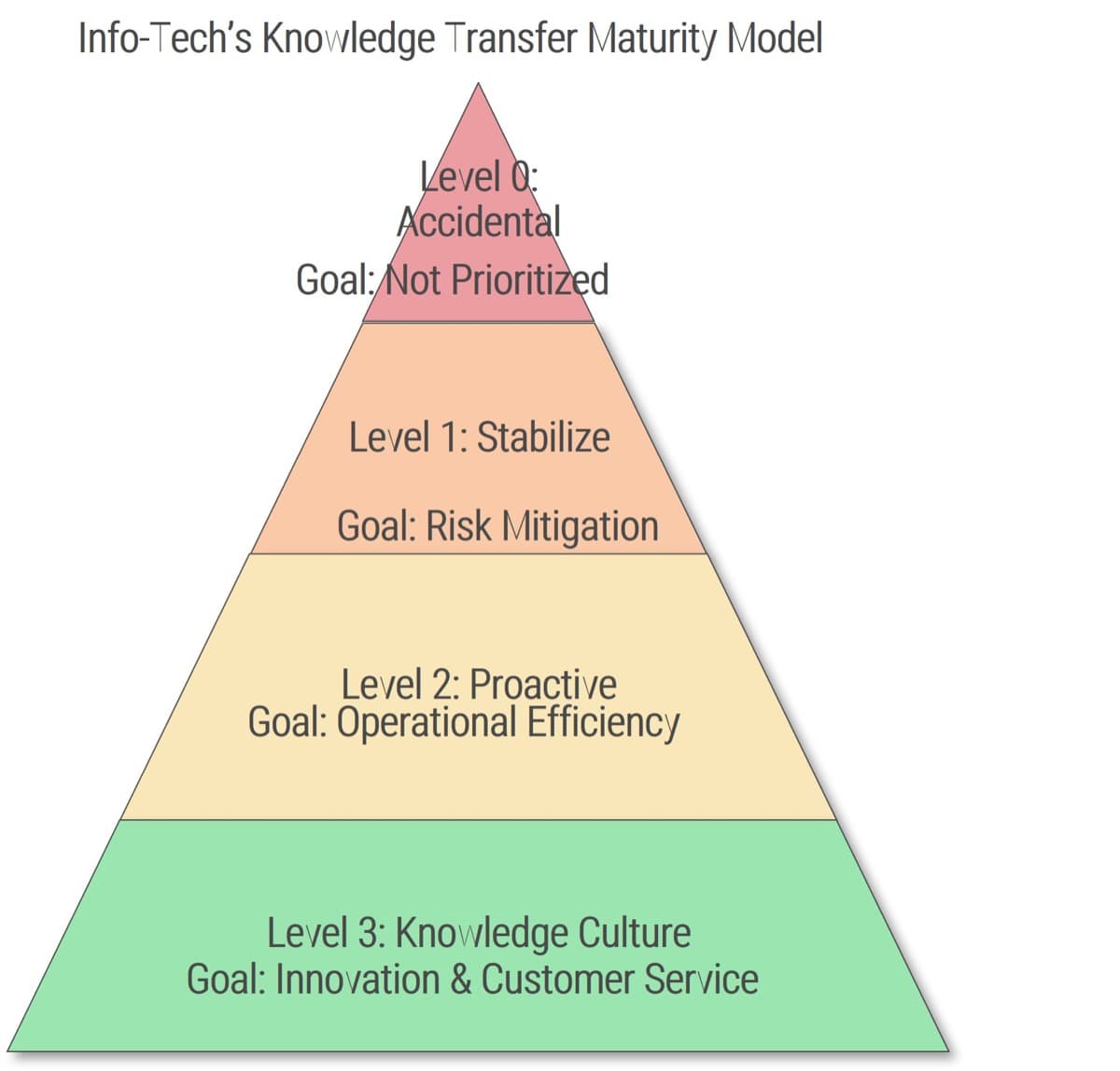 |
No formal knowledge transfer program exists; knowledge transfer is ad hoc, or may be conducted through an exit interview only. 74% of organizations are at level 0.1 |
At level one, knowledge transfer is focused around ensuring that high risk, explicit knowledge is covered for all high-risk stakeholders. |
|
Organizations have knowledge transfer plans for all high-risk knowledge to ensure redundancies exist and leverage this to drive process improvements, effectiveness, and employee engagement. |
|
Increase end-user satisfaction and create a knowledge value center by leveraging the collective knowledge to solve repeat customer issues and drive new product innovation. |
1 Source: McLean & Company, 2016, N=120
Assess your fit for this blueprint by considering the following statements
I’m an IT Leader who…
Stabilize |
…has witnessed that new employees have recently left or are preparing to leave the organization, and worries that we don’t have their knowledge captured anywhere. …previously had to cut down our IT department, and as a result there is a lack of redundancy for tasks. If someone leaves, we don’t have the information we need to continue operating effectively. …is worried that the IT department has no succession planning in place and that we’re opening ourselves up to risk. |
|---|---|
Proactive |
…feels like we are losing productivity because the same problems are being solved differently multiple times. …worries that different employees have unique knowledge which is critical to performance and that they are the only ones who know about it. …has noticed that the processes people are using are different from the ones that are written down. …feels like the IT department is constantly starting projects from scratch, and employees aren’t leveraging each other’s information, which is causing inefficiencies. …feels like new employees take too long to get up to speed. …knows that we have undocumented systems and more are being built each day. |
Knowledge Culture |
…feels like we’re losing out on opportunities to innovate because we’re not sharing information, learning from others’ mistakes, or capitalizing on their successes. …notices that staff don’t have a platform to share information on a regular basis, and believes if we brought that information together, we would be able to improve customer service and drive product innovation. …wants to create a culture where employees are valued for their competencies and motivated to learn. …values knowledge and the contributions of my team. |
This blueprint can help you build a roadmap to resolve each of these pain points. However, not all organizations need to have a knowledge culture. In the next section, we will walk you through the steps of selecting your target maturity model based on your knowledge goals.
Case Study
Siemens builds a knowledge culture to drive customer service improvements and increases sales by $122 million
INDUSTRY: Electronics Engineering
SOURCE: KM Best Practices
Challenge | Solution | Results |
|---|---|---|
|
|
|
Info-Tech’s approach
Five steps to future-proof your IT team
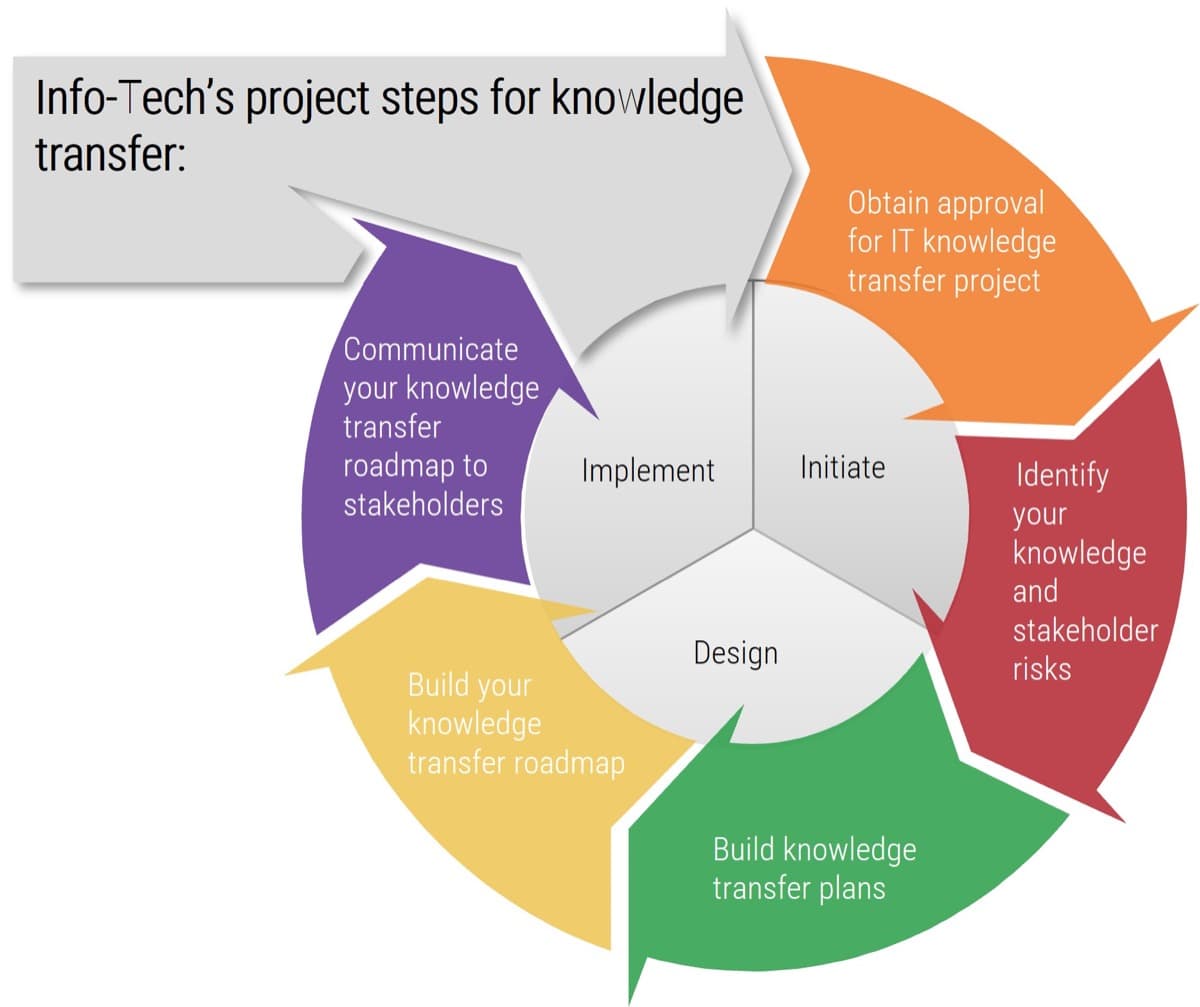
The Info-Tech difference:
- Successfully build a knowledge transfer roadmap based on your goals, no matter what market segment or size of business.
- Increase departmental efficiencies through increased collaboration.
- Retain key IT knowledge.
- Improve junior employee engagement by creating development opportunities.
Use Info-Tech tools and templates
Project outcomes |
1. Approval for IT knowledge transfer project obtained |
2. Knowledge and stakeholder risks identified |
3. Tactics for individuals’ knowledge transfer identified |
4. Knowledge transfer roadmap built |
5. Knowledge transfer roadmap approved |
|---|---|---|---|---|---|
Info-Tech tools and templates to help you complete your project deliverables |
Project Stakeholder Register Template |
IT Knowledge Transfer Risk Assessment Tool |
IT Knowledge Identification Interview Guide Template |
Project Planning and Monitoring Tool |
IT Knowledge Transfer Roadmap Presentation Template |
IT Knowledge Transfer Project Charter Template |
IT Knowledge Transfer Plan Template |
||||
Your completed project deliverables |
IT Knowledge Transfer Plans |
IT Knowledge Transfer Roadmap Presentation |
|||
IT Knowledge Transfer Roadmap |
|||||
Info-Tech’s methodology to mitigate key IT employee knowledge loss
1. Initiate |
2. Design |
3. Implement |
|
|---|---|---|---|
Phase Steps |
|
|
|
Phase Outcomes |
|
|
|
Blueprint deliverables
Each step of this blueprint is accompanied by supporting deliverables to help you accomplish your goals:
IT Knowledge Transfer Project Charter Establish a clear project scope, decision rights, and executive sponsorship for the project. |
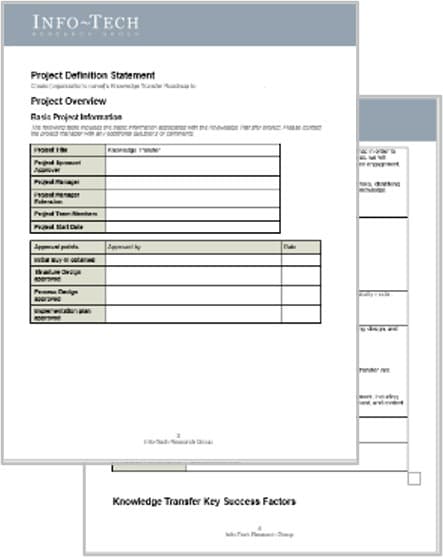 |
IT Knowledge Transfer Risk Assessment Tool Identify and assess the knowledge and individual risk of key knowledge holders. |
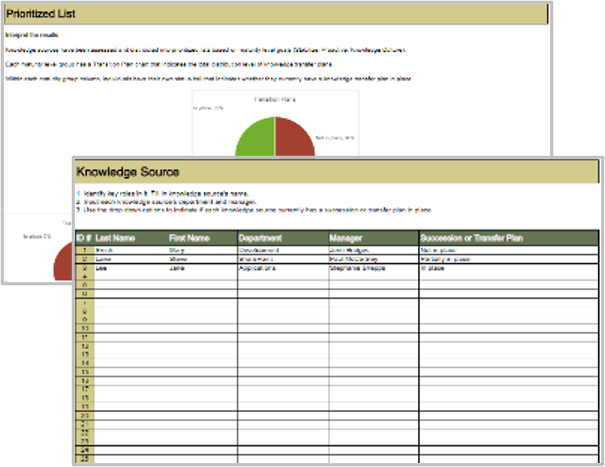 |
IT Knowledge Identification Interview Guide Extract information about the type of knowledge sources have. |
 |
IT Knowledge Transfer Roadmap Presentation Communicate IT knowledge transfer recommendations to stakeholders to gain buy-in. |
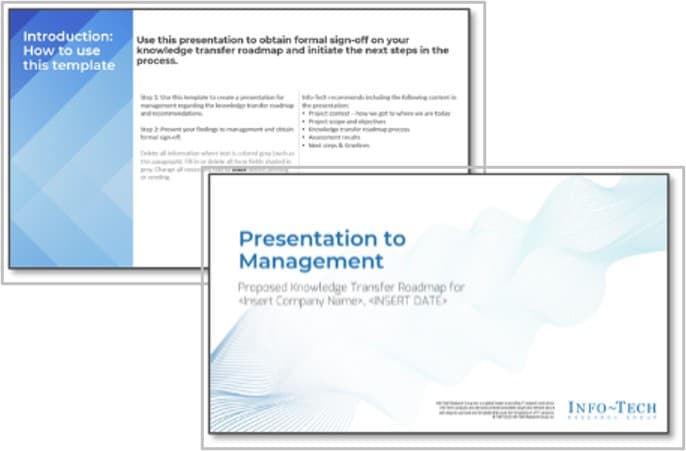 |
Key deliverable:
IT Knowledge Transfer Plan
Track knowledge activities, intended recipients, and appropriate transfer tactics for each knowledge source.
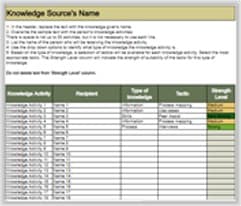
Blueprint benefits
IT Benefits |
Business Benefits |
|
|
Info-Tech offers various levels of support to best suit your needs
DIY Toolkit
“ Our team has already made this critical project a priority, and we have the time and capability, but some guidance along the way would be helpful.”
Guided Implementation
“Our team knows that we need to fix a process, but we need assistance to determine where to focus. Some check-ins along the way would help keep us on track.”
Workshop
“We need to hit the ground running and get this project kicked off immediately. Our team has the ability to take this over once we get a framework and strategy in place.”
Consulting
“Our team does not have the time or the knowledge to take this project on. We need assistance through the entirety of this project.”
Diagnostics and consistent frameworks used throughout all four options
Guided Implementation
What does a typical GI on this topic look like?
| Phase 1 | Phase 2 | Phase 3 |
|---|---|---|
Call #1: Structure the project. Discuss transfer maturity goal and metrics. |
Call #2: Build knowledge transfer plans. Call #3: Identify priorities & review risk assessment tool. |
Call #4: Build knowledge transfer roadmap. Determine logistics of implementation. Call #5: Determine logistics of implementation. |
A Guided Implementation (GI) is a series of calls with an Info-Tech analyst to help implement our best practices in your organization. A typical GI is five to six calls.
Workshop Overview
Contact your account representative for more information.
workshops@infotech.com 1-888-670-8889
Day 1 |
Day 2 |
Day 3 |
Day 4 |
Day 5 |
|
|---|---|---|---|---|---|
Define the Current and Target State |
Identify Knowledge Priorities |
Build Knowledge Transfer Plans |
Define the Knowledge Transfer Roadmap |
Next Steps and |
|
Activities |
1.1 Have knowledge transfer fireside chat. 1.2 Identify current and target maturity. 1.3 Identify knowledge transfer metrics 1.4 Identify knowledge transfer project stakeholders |
2.1 Identify your knowledge sources. 2.2 Complete a knowledge risk assessment. 2.3 Identify knowledge sources’ level of knowledge risk. |
3.1 Build an interview guide. 3.2 Interview knowledge holders. |
4.1 Prioritize the sequence of initiatives. 4.2 Complete the project roadmap. 4.3 Prepare communication presentation. |
5.1 Complete in-progress deliverables from previous four days. 5.2 Set up review time for workshop deliverables and to discuss next steps. |
Deliverables |
|
|
|
|
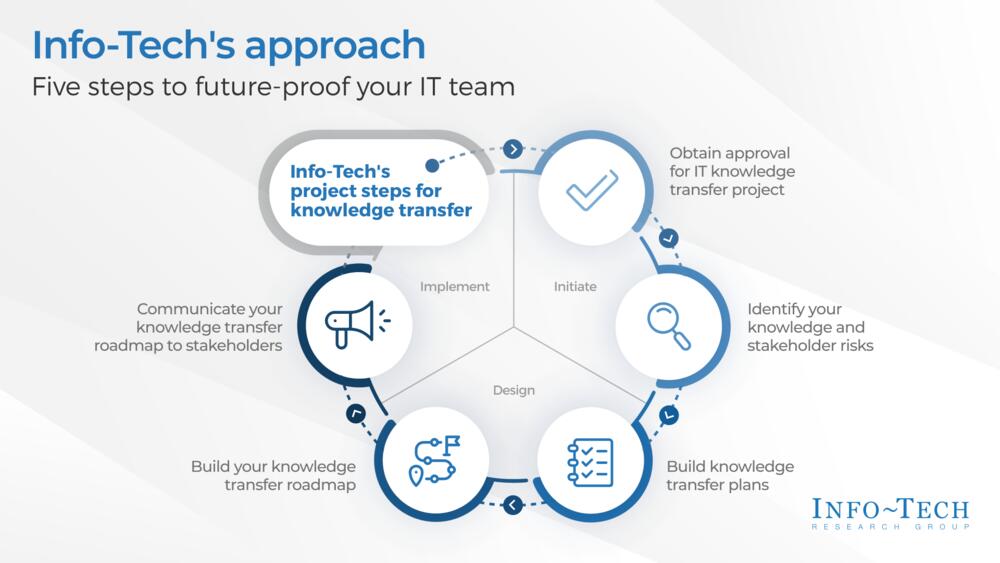
 Become a Strategic CIO
Become a Strategic CIO
 Lead Staff through Change
Lead Staff through Change
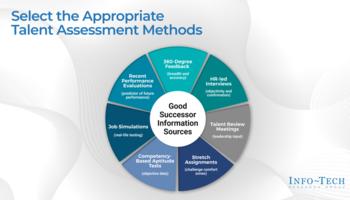 Build an IT Succession Plan
Build an IT Succession Plan
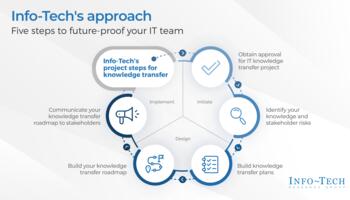 Mitigate Key IT Employee Knowledge Loss
Mitigate Key IT Employee Knowledge Loss
 2020 IT Talent Trend Report
2020 IT Talent Trend Report
 Pandemic Preparation – The People Playbook
Pandemic Preparation – The People Playbook
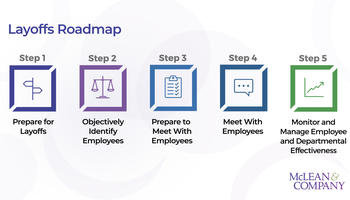 The Complete Manual for Layoffs
The Complete Manual for Layoffs
 Streamline Your Workforce During a Pandemic
Streamline Your Workforce During a Pandemic
 2021 IT Talent Trend Report
2021 IT Talent Trend Report
 IT Diversity & Inclusion Tactics
IT Diversity & Inclusion Tactics
 Leading Through Uncertainty Workshop Overview
Leading Through Uncertainty Workshop Overview
 Leadership Workshop Overview
Leadership Workshop Overview
 Fix Your IT Culture
Fix Your IT Culture
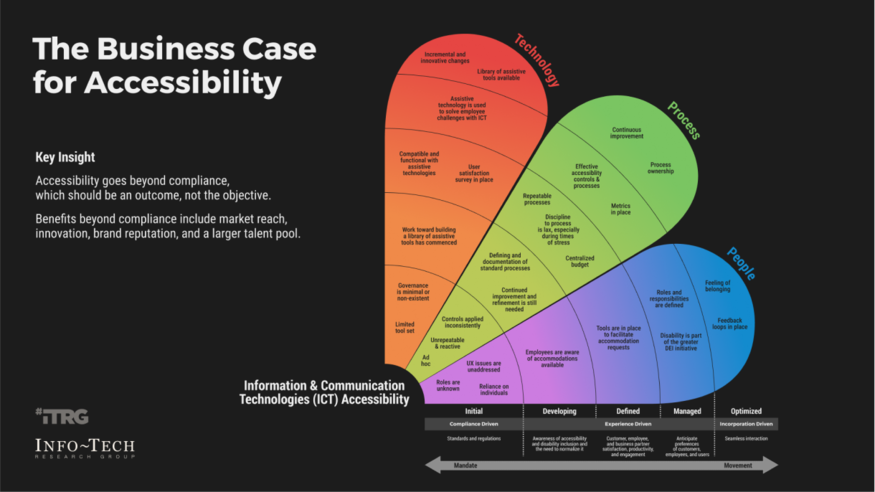 The Accessibility Business Case for IT
The Accessibility Business Case for IT
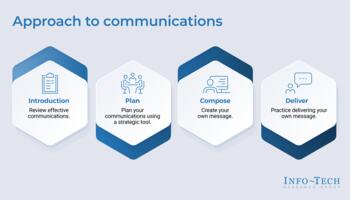 Communicate Any IT Initiative
Communicate Any IT Initiative
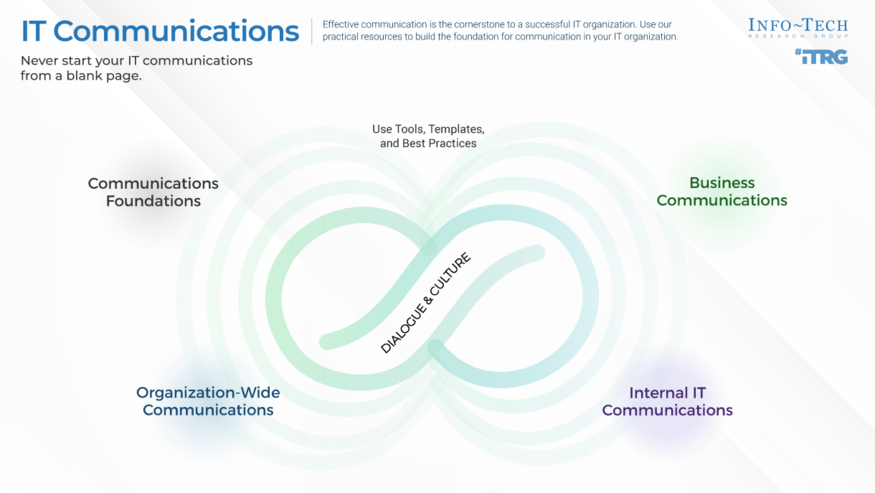 Effective IT Communications
Effective IT Communications
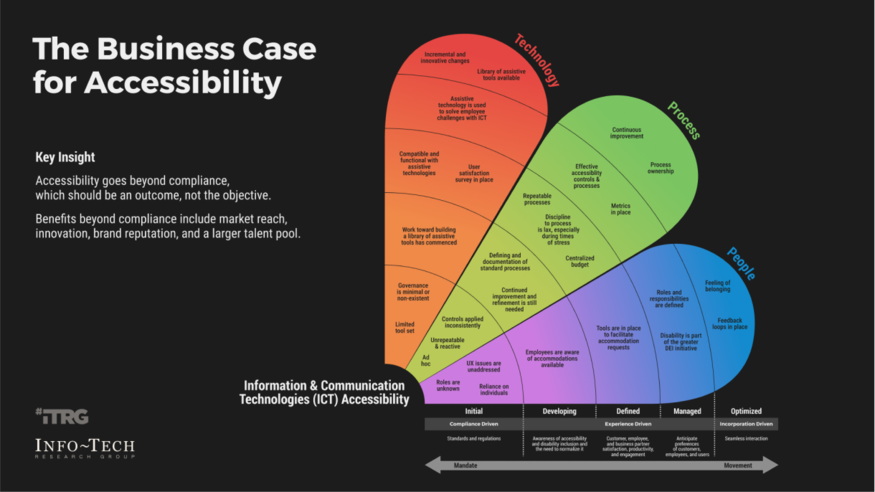 Initiate Digital Accessibility for IT
Initiate Digital Accessibility for IT
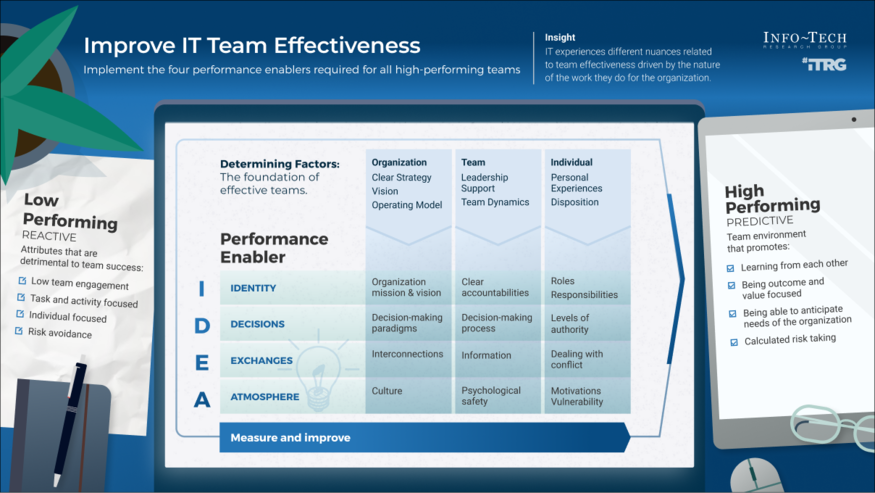 Improve IT Team Effectiveness
Improve IT Team Effectiveness